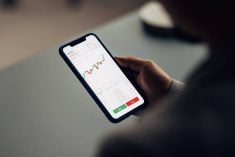The S&P 500 — the market I’ll be referencing throughout this article — has been on a tear the past couple of years, leading many to wonder if the hot bull market can continue. It was up 26.3 per cent in 2023 and at time of writing is up about 23 per cent year-to-date. Let’s look at three key cycles in an attempt to answer that question.
Firstly, I am writing 10 days prior to the U.S election and you’ll be reading it a month afterward, so my initial comments will or will not be validated by the time you read the article. The market prices in expectations prior to their occurrence — and surprises contrary to expectations are what really move individual stocks and the market at large. Examples of expectations pre-priced by the market include politics, interest rates and corporate profitability.
Politics
Read Also

Gentle treatments for pain in the neck
Heading toward year-end, people unknowingly tense up against the cold and busyness, causing neck pain that can often be treated with appropriate support and gentle mobility, athletic therapist Kathlyn Hossack says.
The market is currently pricing in a Trump victory. He has momentum with his polls having been lowest just after the Trump/Harris debate, and he is in the lead in every swing state, albeit by narrow margins.
The market was very nervous about a Trump win eight years ago, but less so now that he is a known political commodity (whether you like him or not) and his tax cut and regulation reduction promises are good for the economy and the market. Negatively, there is concern tariffs will reignite inflation, and tax cuts will expand the deficit. Both these factors are contributing to a unique situation where, while short-term interest rates are being cut, long-term rates are rising. U.S. 10-year bonds have risen from 3.65 per cent to 4.24 per cent since the Fed announced its first 0.5 per cent rate cut.
If a surprise Harris win occurs, I think we will see a short-lived stock sell-off and bond rally. However, as written many times, the money is made taking a long-term perspective, so I have no plans to attempt outguessing these short-term gyrations.
From a longer-term perspective, markets loosely follow a presidential cycle. The third year of the cycle, 2023, is by far the best year, with an average after inflation gain of 13.5 per cent. The worst year by far is the second year, with an average real gain of just 3.3 per cent. The first and fourth years are average years, but fourth-year gains tend to come after election uncertainty clears. The theory behind these variations is that new administrations implement their tough policy changes early in their mandate, and by the third year are doing their utmost to prime the pump for a robust economy in the upcoming election year.
That said, I don’t see these as tradeable variations. The worst second year in stocks is better than average bond market returns, and averages are made up of extremes. Just because something happens on average, doesn’t mean it will happen this time.
The presidential cycle may partly explain the economic cycle but is a long way from explaining the complete cycle, with the current one being distorted by a very unusual pandemic episode.
Interest rates
The economic cycle moves from boom to bust and back to boom. A robust economy generally leads to higher inflation and increasing interest rates, which act as an economic brake slowing growth and inflation, once again leading to lower interest rates to revive the economy. Governments and the Federal Reserve (Bank of Canada, in our case) try to moderate the boom/bust cycle through spending and short-term interest rate changes. However, the current cycle has seen unrestrained government spending almost everywhere, which is concerning.
Profitability
With those basic explanations, let’s get back to the original question. Naturally, stocks tend to do better in robust economies when sales and profits are growing. I examined historical bull and bear market data. Since 1928 we have experienced 22 bull markets interrupted by 22 bear markets defined as a loss of 20 per cent or more.
The average bear market lasted almost exactly a year, with average losses of 36.6 per cent, and a range from negative 20.6 to 83 per cent. The most recent bear market ended on Oct. 12, 2022.
The average bull market lasted 3.3 years and experienced a gain of 142.2 per cent, with a range of 20.8 to 582.1 per cent. The shortest bull market of 98 days occurred in 1932, and the longest bull market occurred from 1987 until 2000. Coincidentally, the average length of a bull market plus bear market equals a presidential term. The current bull market is just over two years old and has gained 63 per cent, at time of writing. Therefore, the current bull is well short of average bull market gains and duration.
That doesn’t mean it couldn’t end tomorrow, or it couldn’t go on for another five years. Averages are made up of extremes, which the wide range of outcomes illustrate.
It is also important to note that while recessions and bear markets often occur together, that is not always the case. There was a significant recession in 1991 without a bear market, and the 2022 bear market occurred without a recession, even though one was widely predicted.
Renowned investor John Templeton said, “Bull markets are born on pessimism, grow on skepticism, mature on optimism and die on euphoria.” You will hopefully recall numerous 2021 articles warning about euphoric speculation that was occurring (for example, “Specs and SPACs,” Grainews, March 23, 2021, page 20). That speculative era ushered in the 2022 bear market. While valuations are high, we are not currently experiencing significant speculation as in 2021.
Combining the above thoughts on three key cycles with the current optimistic but not euphoric tone, I think, but certainly don’t know, the bull will continue until its legs grow wearier.
















